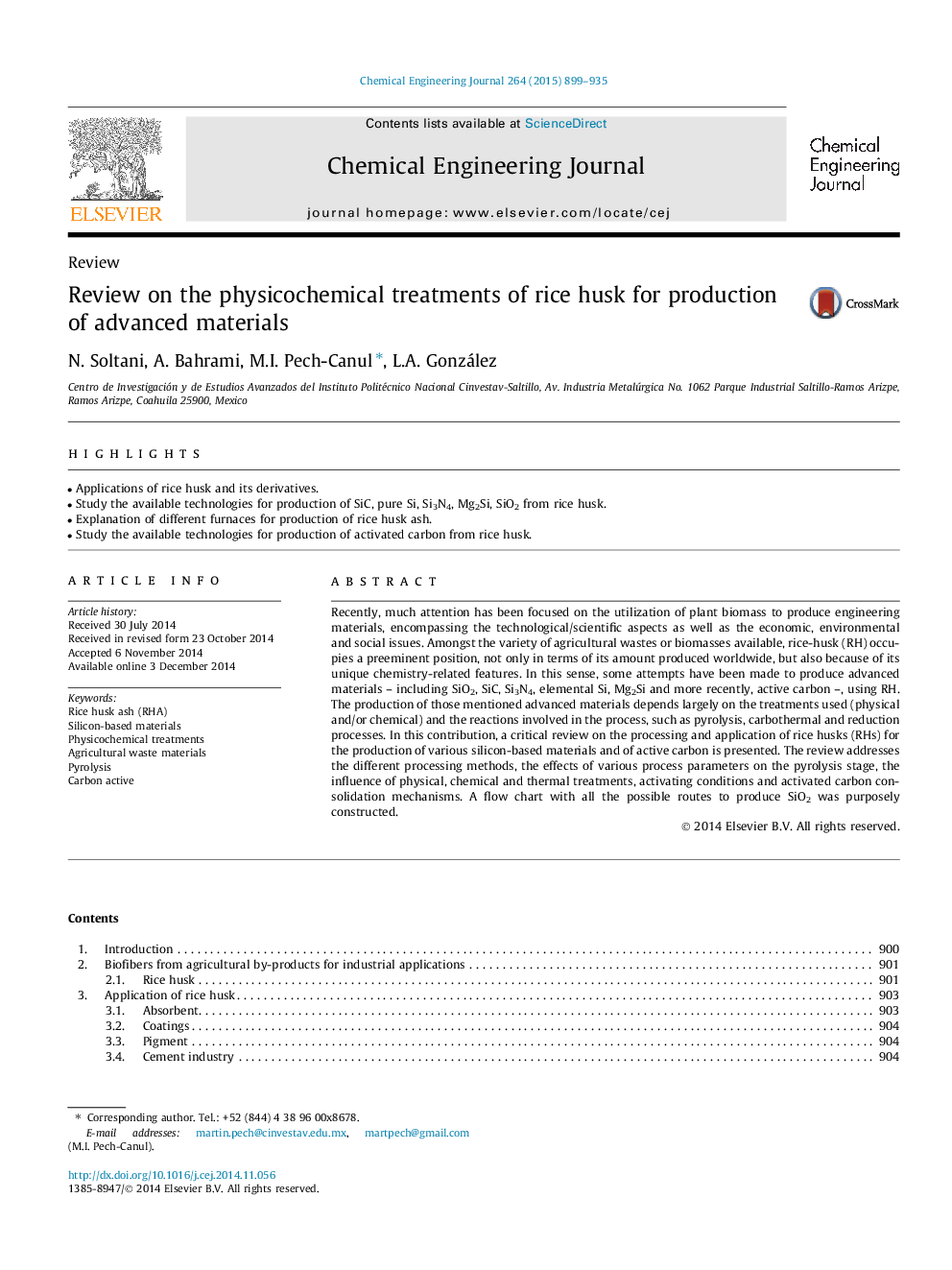| Article ID | Journal | Published Year | Pages | File Type |
|---|---|---|---|---|
| 146822 | Chemical Engineering Journal | 2015 | 37 Pages |
•Applications of rice husk and its derivatives.•Study the available technologies for production of SiC, pure Si, Si3N4, Mg2Si, SiO2 from rice husk.•Explanation of different furnaces for production of rice husk ash.•Study the available technologies for production of activated carbon from rice husk.
Recently, much attention has been focused on the utilization of plant biomass to produce engineering materials, encompassing the technological/scientific aspects as well as the economic, environmental and social issues. Amongst the variety of agricultural wastes or biomasses available, rice-husk (RH) occupies a preeminent position, not only in terms of its amount produced worldwide, but also because of its unique chemistry-related features. In this sense, some attempts have been made to produce advanced materials – including SiO2, SiC, Si3N4, elemental Si, Mg2Si and more recently, active carbon –, using RH. The production of those mentioned advanced materials depends largely on the treatments used (physical and/or chemical) and the reactions involved in the process, such as pyrolysis, carbothermal and reduction processes. In this contribution, a critical review on the processing and application of rice husks (RHs) for the production of various silicon-based materials and of active carbon is presented. The review addresses the different processing methods, the effects of various process parameters on the pyrolysis stage, the influence of physical, chemical and thermal treatments, activating conditions and activated carbon consolidation mechanisms. A flow chart with all the possible routes to produce SiO2 was purposely constructed.
